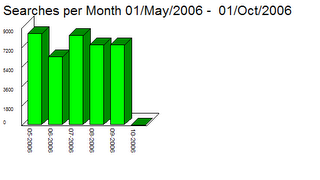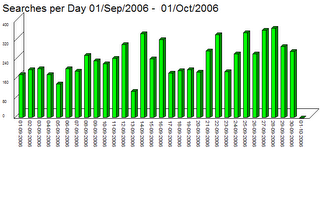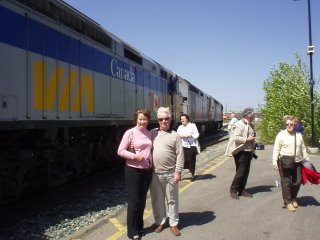In the West Briton in late May 1841, a series of articles appeared entitled "Hints respecting the new census, to be taken on Monday 7th June" The writer is not identified but the way it is phrased suggests he is not a member of the authorities. I have only quoted parts of it on the grounds of size.
1. The best mode of taking a census is by a map and a register. On the map, the situation of houses only should be marked. Every house should be numbered, and then a register of every inmate made. The commissioners have adopted the plan of a register, and arranged an expensive machinery for taking it, but the form is very imperfect. It is to be written in pencil. Ages above 15 are to be entered thus - at 29, put 25, if 34, put 30, and soon. If a person has two Christian names, only one is to be inserted. The county where born is to be recorded, but not the parish, which the Act also requires. Such a register will be of little use. At the same cost one might be taken which would ensure an accurate census, and might be useful for many purposes in a parish till the decennial enumeration of 1851. A register of this kind was prepared in 1831 for a large parish in this county, and has been of great service ever since.
8. Instructions to the registrars and Enumerators have been issued by the commissioners, together with the householder's schedule. A copy of the latter is to be left at every dwelling the week before the 7th of June. 3,600,000 copies of it have been printed. The enumerators will do well, though they have the choice of employing an agent, to distribute these schedules themselves, as they will thereby become better acquainted with the extent and condition of their respective districts.
9. No instructions have as yet been given in the Superintendent Registrars, to whom the schedules and register books are to be finally brought. There appears, however, to be no intention of forming a summary of them for each parish and union before they are transmitted to London. Persons interested in the statistics of the county should bear this in mind, and endeavour to secure a summary for the use of the public in Cornwall before the documents are all sent away. It may be that otherwise they will have to wait a twelvemonth before the results are made known. [from here, the print becomes distorted]
10. It is very desirable that each Enumerator should provide for himself a map of his own district. This cannot be a [choice]... [article then continued that circles should be drawn, and numbered to indicate 1 house with 7 persons, or 56 houses with 268 persons, maintaining the system would then include all dwellings, not just those in towns and villages.]
16. A circular has been addressed by the commissioners to the clergy, requesting their co-operation in taking the census. Though it comes late, it will, no doubt, meet with due attention. A short note on the subject appeared in the last Ecclesiastical Gazette, and from the extensive circulation of that paper many may be lead thereby to examine the plan proposed, and to aid it by their advice and direction. No time should be lost; the business should be undertaken at once, during the next week, through the medium of committees, or by giving personal assistance to the enumerators.
19. On Monday next, the 7th of June, an attempt will again be made to form a Speculum Britannice, or mirror of the inhabitants as to their condition and locality, when they arise from their slumbers on the morning of that day, to give an exact picture of the then living generation, and to perpetuate a description of it for present and future use. This will be found no easy task - it will require all the assistance which the appointed officers, the local societies, the clergy, and others can give to render it complete as a national work. The institutions at Falmouth, Truro, Tavistock, Plymouth, and elsewhere should be on the alert. A statistical view of eight miles round St. Andrew's church, Plymouth, showing, inter alia, how the population is located, as well on the water as on the land, would be a valuable present to the British Association on their meeting at that beautiful harbour in August.
20. The enumerators will do well to keep for their own use and future reference a correct copy of their register, which they need not deliver over for a week, till Monday the 14th of June. Attention should be paid to the queries at the end of the registers whilst they perambulate their districts, as it may otherwise be found difficult on their return to prepare answers to them. The clergy are to transmit the abstracts of burials from 1831 to 1840, from the parish registers to the Bishop, on Monday, 21st of June. It is recommended to preserve in each parish a summary of the return.
1. The best mode of taking a census is by a map and a register. On the map, the situation of houses only should be marked. Every house should be numbered, and then a register of every inmate made. The commissioners have adopted the plan of a register, and arranged an expensive machinery for taking it, but the form is very imperfect. It is to be written in pencil. Ages above 15 are to be entered thus - at 29, put 25, if 34, put 30, and soon. If a person has two Christian names, only one is to be inserted. The county where born is to be recorded, but not the parish, which the Act also requires. Such a register will be of little use. At the same cost one might be taken which would ensure an accurate census, and might be useful for many purposes in a parish till the decennial enumeration of 1851. A register of this kind was prepared in 1831 for a large parish in this county, and has been of great service ever since.
8. Instructions to the registrars and Enumerators have been issued by the commissioners, together with the householder's schedule. A copy of the latter is to be left at every dwelling the week before the 7th of June. 3,600,000 copies of it have been printed. The enumerators will do well, though they have the choice of employing an agent, to distribute these schedules themselves, as they will thereby become better acquainted with the extent and condition of their respective districts.
9. No instructions have as yet been given in the Superintendent Registrars, to whom the schedules and register books are to be finally brought. There appears, however, to be no intention of forming a summary of them for each parish and union before they are transmitted to London. Persons interested in the statistics of the county should bear this in mind, and endeavour to secure a summary for the use of the public in Cornwall before the documents are all sent away. It may be that otherwise they will have to wait a twelvemonth before the results are made known. [from here, the print becomes distorted]
10. It is very desirable that each Enumerator should provide for himself a map of his own district. This cannot be a [choice]... [article then continued that circles should be drawn, and numbered to indicate 1 house with 7 persons, or 56 houses with 268 persons, maintaining the system would then include all dwellings, not just those in towns and villages.]
16. A circular has been addressed by the commissioners to the clergy, requesting their co-operation in taking the census. Though it comes late, it will, no doubt, meet with due attention. A short note on the subject appeared in the last Ecclesiastical Gazette, and from the extensive circulation of that paper many may be lead thereby to examine the plan proposed, and to aid it by their advice and direction. No time should be lost; the business should be undertaken at once, during the next week, through the medium of committees, or by giving personal assistance to the enumerators.
19. On Monday next, the 7th of June, an attempt will again be made to form a Speculum Britannice, or mirror of the inhabitants as to their condition and locality, when they arise from their slumbers on the morning of that day, to give an exact picture of the then living generation, and to perpetuate a description of it for present and future use. This will be found no easy task - it will require all the assistance which the appointed officers, the local societies, the clergy, and others can give to render it complete as a national work. The institutions at Falmouth, Truro, Tavistock, Plymouth, and elsewhere should be on the alert. A statistical view of eight miles round St. Andrew's church, Plymouth, showing, inter alia, how the population is located, as well on the water as on the land, would be a valuable present to the British Association on their meeting at that beautiful harbour in August.
20. The enumerators will do well to keep for their own use and future reference a correct copy of their register, which they need not deliver over for a week, till Monday the 14th of June. Attention should be paid to the queries at the end of the registers whilst they perambulate their districts, as it may otherwise be found difficult on their return to prepare answers to them. The clergy are to transmit the abstracts of burials from 1831 to 1840, from the parish registers to the Bishop, on Monday, 21st of June. It is recommended to preserve in each parish a summary of the return.




